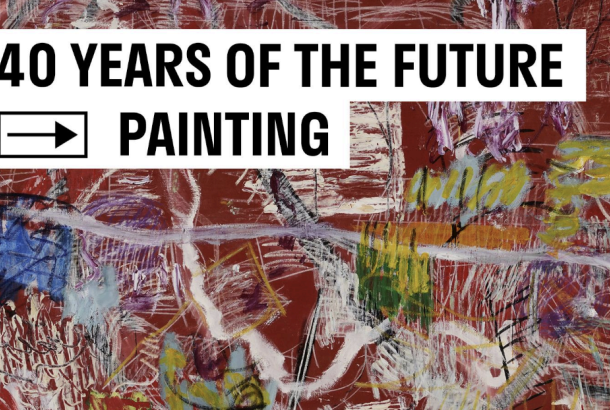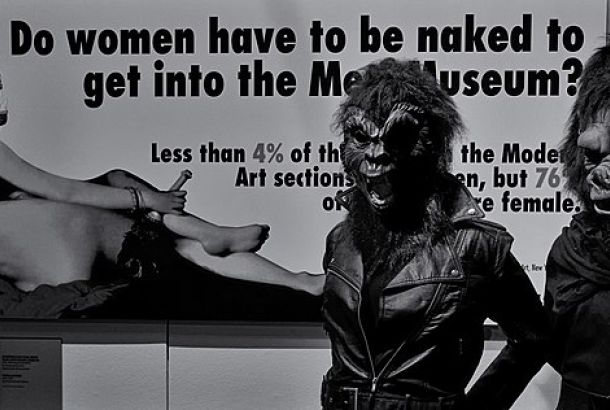Hulme is where the art is (Web Exclusive)
You might have heard of Hulme. You might know where Hulme is. You might even live in Hulme. But you probably don’t know the stories of Hulme’s inconstant past. The trouble with buildings is, once evacuated, they betray nothing of their former lives. In their current state they are present only for our facility and our backdrop; the ultimate Buddhists, edifices live exclusively in the moment. But what if you saw four walls and a floor as something other than scenery?
The year is 1995. The soundtrack is B.I.G., or someone else notorious. Music provided by Jamie, from The Kitchen. Walls are there for the taking; shop shutters, garage doors, burnt out cars, walkways. They are nobody’s and everybody’s, ready for appropriation. And the great and the good, the horizontal and the vertical have gathered to bear witness, or just to bear drinks. Window inlaid in grey brick upon faceless window stretches out in an ellipse that begins to wrap towards the clustered figures, shrouding them in grey. It is 23rd April, the first Graffiti SMEAR Jam of many in Woodstock Square, at the centre of Hulme estate’s Crescent Flats. The socially defunct Hulme estate was to be prepped for total demolition, funds pending, and the ICA with kELzO at its helm had organised the Jam to immortalise the soon-to-be functionally mortal home over their heads. The paint-fuelled party continued into the night. The next day, revellers awoke to Woodstock Square fenced off, the paintwork out of arm’s reach of the arms that had reached out with a spray can and pressed down.
Hulme’s history stretched blindly far behind this acid-housed estate of things, but, of course was now unremembered, un-whispered memory. The only talking these walls did was penned in clumsy, large, neon scrawl. Hulme’s was a history of halves. From Victorian slum, to post-war urban regeneration, to denigration socially and edificially; slum once more. The curving Crescents, built in the 60s, were lauded for their technological innovation when built. But they quickly revealed the flaws in their floors. They were cold, damp, crumbling, expensive to maintain. The 1970s oil crisis meant it became too expensive to heat the flats for many of the residents. The deck access infrastructure, allowing access to the flats through an elevated system of decks, was unpatrolled by police because it was not a street, and the ‘concrete maze’ fostered a high level of crime and drug use. The Council, despairing of the situation, at one point began handing out keys to anyone who would take them. ‘Hulme’ is Danish for a small island surrounded by water or marshland, and now, as island or cage, Hulme had become a law unto itself: ‘run by the freaks, for the freaks’. Squatting became common ground; rent was, clearly, improbable.
Hulme, playground to the outlawed and lawless, was ‘a magnet for every crazy, every loon, every counterculture inclined freak in the north of England’, as one John Robb, resident, remembers. And our loons really knew how to rock the boat, in terms of parties. The Kitchen (Hulme’s harder, faster, louder, stronger, freakier, creakier answer to The Factory) cooked up a feast for the senses with it’s ‘mad ones’. As well as remedial partying, every band and creative enthusiast associated with Manchester seems to have passed through Hulme: Joy Division, Simply Red, Lemm Sissay, Steve Coogan, Community Charge, and of course, most pertinently (to us) Inner City Artists –the kingpins of Hulme graffiti life.
Why did the island cultivate such an exotic climate of creating? And in particular, why did the voice of graffiti begin to roar so freaking loud? In the late 80s Hulme catalysed Manchester’s shameless flirtation with the tantalizing art of the street develop into a full-blown relationship with the aerosol. Graffiti was ‘everywhere’, and really everywhere in Hulme. Well, I am here to tell you that the choice of graffiti was no accident, nor was it improbable or unforseen. In fact, it was no choice, graffiti chose Hulme.
So to answer my own question, firstly, low, or no rent, allows the impoverished artists to settle. And creativity breeds creativity. The low rent, crumbling buildings and general disarray of the area also allowed it to be cordoned off, circumvented by the nine-to-fivers and even police patrols. So the freedom of the concrete island encouraged and attracted artistic experimentation. And the peripheral figures of society became more peripheral in the eyes of the law, a merry band of outsiders secluded and excluded. In short le freak, it were chic. But all this explains the creative vibes of Hulme in general shaking up. Graffiti in particular is a different curve of the crescent, as they say.
Let us turn to the prototype of good ole N.Y. City, the very urban expanse that birthed graffiti, to elucidate a few more kernels of reason. In the late 60s, a couple of young vagrants began a very specific vandalism: they began to sign walls and subway arches with a stylised alter-ego signature. The tag is born. Now, the relevant kernel in this instance is that the misspent youths in question were of ethnic-minority descent: the young Puerto Rican, Julio (tag Julio 204), and Greek Demitrios (Taki 183). And in 1960s New York, it might just be possible to class young minority ethnics as peripheral figures in society. And if, like Al Baker (paparazzi-in-chief to Hulme’s graffiti magic back in the day) we ‘read’ graffiti ‘as a response to urban alienation’ this seems not implausible. Urban alienation was the flip side to the freedom Hulme weathered. The disenfranchised underdog, with little or no power or influence, or means to get power or influence, breaks out of this cage, leaps up and ‘takes space’ for him/herself by the only means available to him/her. And all of a sudden, this voiceless pup has identified itself to the city, sprayed his turf, he is present and accountable, and (here’s the clever part) through means outside the law, but firmly inside the lines of urban infrastructure.
And back in humble Hulme, alienation incarnate, a whole island of the thing. Al Baker targets the nail again, identifying graffiti as ‘the desperate voices of dissent scrawled onto buildings’; and this mode of dissent is not quiet or private but loud and to be heard. Graffiti is an individual expression of dissent, and yet, the irony in terms, for there must be one; the outsiders making their individual dissent heard, bonds those outsiders into a community; one of their own making and own voice.
So graffiti, an essentially and necessarily urban syntax, thriving off urban alienation and dissent chooses the building blocks of municipality itself for its canvas. Those first few dissenters, canny as they were, alighted also on the roaring symbol of modern urbanity for canvas, tagging and painting subway trains. As Norman Mailer points out (yes, him) the trains gave the ‘superpowered whoosh’ of graffiti actual whoosh bringing the paint to life, the movement resonating with the fluidity of graffiti. In its inherent transience, the writers owned neither the buildings they tagged, nor the pieces they created, and leaving it against the elements of authority; the instability was present in the work itself. It’s art, Tony, but not as we know it. And just as the dissenters began to articulate their presence, so the NY Council articulated their distaste for the sound and means of the dissent with ever more desperate ways of removing the ‘vandalism’; thus confirming the societal cage against which the underpups were butting their heads. Back in the jungle, Hulme writers, such as kELzO, in lieu of a public transport system, preferred the automobile as their canvas of transport. Their Council rarely admonished, preferring to merely ignore, and then demolish.
And despite alienation, freedom, social dissent, the need to create a language all their own, and the need to air these graces out where they were seen and also heard, we have one more reason why graffiti was Hulme’s weapon of choice specific to Manchester. The weather. The drab greyness and damp sky that permeated the drab grey and damp buildings positively cooed for colour. And the graff-ters were all ready and prepped with social disaffection to pounce with cans of colour, ‘psychedelic against the grey’. Once more, the buildings built where they were and what they were spelt conditions perfect for the immigration of graffiti. Thankfully for the theorists, the creation from these conditions was put right back from whence it came, onto the buildings.
The viral verve with which graffiti infected New York in the 70s and 80s confirmed its resonance and power. And when Hip-Hop, the ‘physical’ street-urchin to graffiti’s visual, struck, the streets thrummed with the combined voices like the walls of The Kitchen. When the Hip-Hop alien descended on the alienation that was Hulme, it mutated and flexed filling the decks. And it was at this juncture, with Hip-Hop as its soundtrack, that graffiti germinated in Hulme. The Hulme graffiti was ‘different’ from anywhere else. kELzO developed a 3-D style writing, and a realism previously unseen. There was very little hate or abusive writings. With the ICA at its centre, almost a social convention, slogans such as ‘Give kids opportunities and the mayhem will end’, and ‘Proud to deviate’ dominated. It was a style and substance all its own, just like Hulme. The drive and extent of the work led to one of Europe’s biggest Halls of Fame. And the graffiti was celebrated with Jam after Jam, and given a good home. And after all this whispered, half-forgotten history, it may be said that the outpour of graffiti in an inner city wasteland in the Age of Hip Hop was inevitable, predictable. Yet, is it not always surprising when something, and something good, is created out of nothing?
The Jam is in session. The party, people and purpose have come together and are infecting the walls with the virus of colour. Jamie, of The Kitchen, is not around, but luckily some DJ or MC has stepped up to the plate. It is July 2011. And the great and good, the peripheral and the eloquent are painting neon washes onto the drab greyness.
Jonathon Jones (art critic for journal giant, the Guardian) pronounces Street Art Is Dead. The Salford Council spend £15,000 painting over a graffiti wall on the Waterfront to create an ‘Aspirational Walkway’. They say they are removing the ‘the growing problem of graffiti’ at the residents’ behest. They are reminded that they are ‘anti-art’ and ignorant well-fed felines by those pro-art. History sure moves in mysteriously cyclical ways.
Why the need to mull over the buried rubble of graffiti’s past in Manchester if street art is dead? Graffiti is now no cause for sharp intakes of breath from the well-heeled, the ‘but is it art’ debate has exhausted itself, and the art-world find ‘it’ an interesting specimen for examination. Now, graffiti is part of buildings. As for the very recent, very relevant graffiti stories hitting newsrooms all over the North West, well if it is dead, graffiti is a pretty rowdy corpse. The fact remains that graffers don’t brandish their cans to enliven a healthy intellectual debate, or even to piss the authority figures off (usually). They get up only because they want to. And if the latter-day rioting and its response was any proof, the root causes of graffiti are far from dead.
With thanks to www.exhulme.co.uk, kELzO, and ‘The Emergence of Graffiti in New York City’ by Pamela Dennant; for their information and memories.







